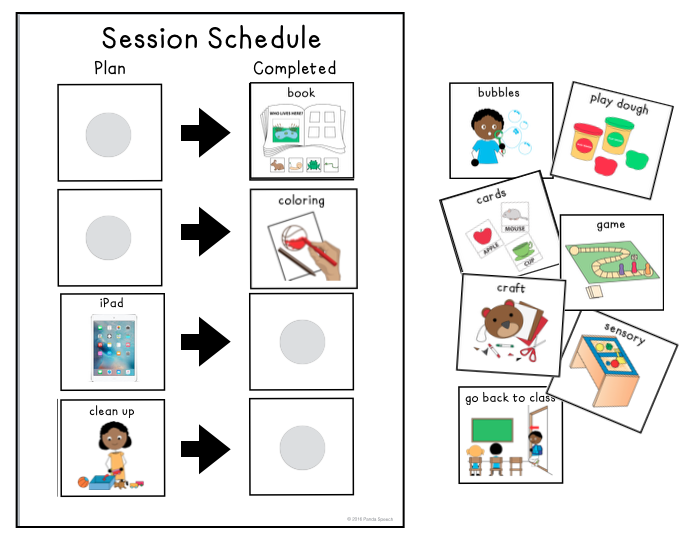Visual Supports
What are visual supports?
It’s simple! A visual support is any picture, written word or visual item to communicate with a person who may have difficulty taking in verbal information, particularly children with autism spectrum disorder (ASD). Processing verbal language may be challenging for children with autism; visual supports including visual expectations, schedules, or choices provide a means for your child to take in information in a way that may be more meaningful to them.
Why and how do I use visual supports?
Visual supports can be an extremely effective way to help your child with by adding predictability and nonverbal input. While there are many children with autism who benefit from visual supports, they may be particularly effective for children who thrive with routines and predictability.
WHAT IS A VISUAL SCHEDULE?
Visual schedules are particularly helpful for those children who may have strict adherence to routines or have trouble transitioning between activities. For example, you may use a visual schedule to outline daily activities. Visual schedules can be personalized with pictures or words to let your child know what activities or locations are coming next, or even what their day is going to look like! One app we love to use at C.A.B.S. to teach visual schedules is Choiceworks.
Visual expectations or visual parameters are another way to add predictability and consistency for your child with autism. For example, you may present visuals to communicate physical boundaries, such as a “STOP” sign on a door.
You may also use a visual expectation to communicate the availability of something; if your child can have a package of Goldfish crackers two times per day, you could indicate through visuals, such as two pictures of Goldfish on the cabinet which are crossed off each time your child has a package of Goldfish.







